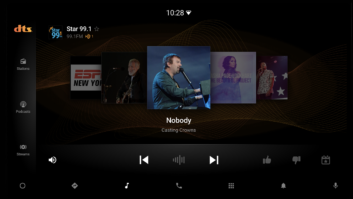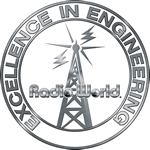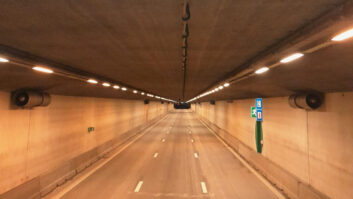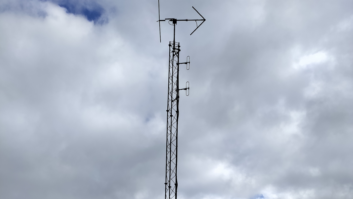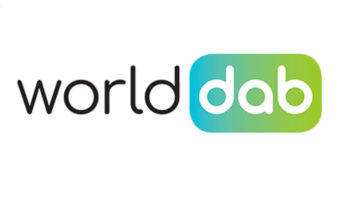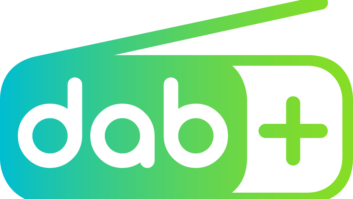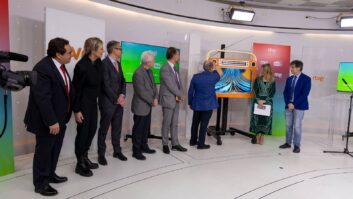The author is communications manager for WorldDAB.
LONDON — As DAB+ continues to establish itself as the future platform for radio across Europe, focus is now shifting to developing the DAB+ experience in the car.

On one hand, drivers expect radio to be a seamless experience offering good performance, more — and more tailored — content, relevant information and as little distraction as possible. On the other hand, car manufacturers want a radio performance that exceeds FM, is able to display information on the screen, and does not put the driver at risk.
AUTOMOTIVE CONFERENCE
On June 20, WorldDAB Automotive 2019 brought together experts from the broadcasting and automotive industries to discuss how they are working together to further improve the in-car digital radio experience.
Speaking at the conference held in Turin, Italy, WorldDAB Automotive Working Group (AWG) chair Laurence Harrison, highlighted some of the work the AWG has been doing on various fronts to further develop DAB+ in the car and build long-term collaborations between broadcasters and car manufacturers.
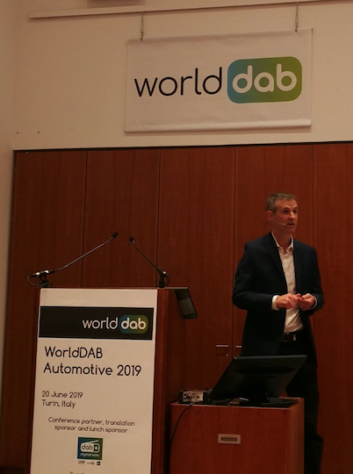
Harrison touched on the launch of second version of the User Experience (UX) Design guidelines, which was published in February and are designed to help manufacturers and broadcasters deliver the best digital radio experience in the car.
Based on conversations between the AWG and all the leading automotive manufacturers, the updated guidelines give clearer direction to hybrid radio as providing the best UX in connected cars — particularly when DAB+ is included. The guidelines also give clearer signposting to other research and useful guidance on features such as user interface (UI) design, station logos and other on-screen information.
WorldDAB member Arqiva, which operates DAB networks in the United Kingdom, is conducting tests on the delivery of logos via DAB using Service and Programme Information (SPI) standards and is hoping to build on the success of early results.
Harrison also highlighted the importance of the Test Routes that WorldDAB has now made available. Following work within the WorldDAB Receiver/Antenna Performance Taskforce, and in order to help with DAB testing for cars in different markets, WorldDAB has published test routes from a number of markets in order to help any company producing vehicles, antennas, or equipment to test their products and services on a route showing different conditions for DAB+.
[Read: WorldDAB Automotive 2019 Studies DAB+ in the Dash]
Finally, he also outlined the next phase of the Groups’ work, which will be to identify consumer use cases for digital radio in connected and autonomous cars. Initial use cases have been identified covering personalisation, a seamless experience between devices and platforms, a new UI sing voice and on-demand content, and richer visuals on bigger screens. The AWG will now focus on collaborative actions that can be undertaken to support delivery of these use cases.
TAILOR-MADE CONTENT
Speaking at the conference in Turin, Eugenio La Teana, head of research and development at EuroDAB Italia, emphasized that DAB+ enables the creation of new and innovative content, and can help display useful information such as travel and traffic on screens. To that effect, RTL 102.5 and Autostrade per l’Italia have teamed up to create a digital-only station tailored for the needs of drivers that spend a lot of time in the car. The station, which is live 24/7 throughout the year, provides traffic updates between every other song.
If we are to draw one lesson from WorldDAB Automotive 2019, it’s that DAB+ is making waves both in and out of the car — something that is echoed by the EECC directive introduced by the European Union at the end of 2018, which requires all new car radios sold within the EU to be capable of receiving digital terrestrial radio by the end of 2020.
DAB+ continues to gain significant ground across the globe, and with the automotive industry on-board, the future of digital radio in the car is looking bright.





